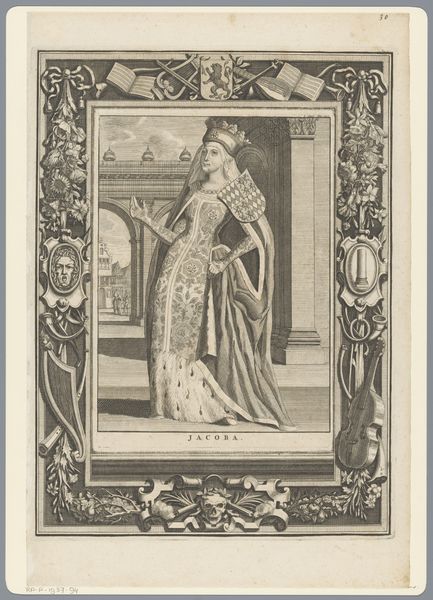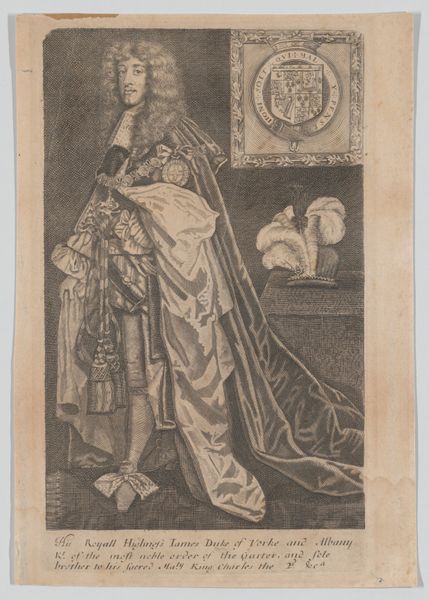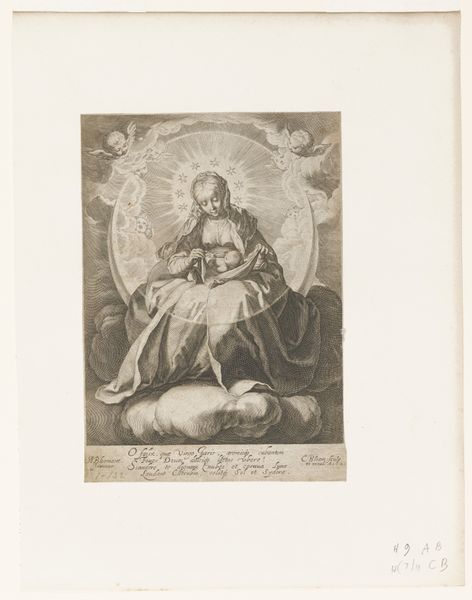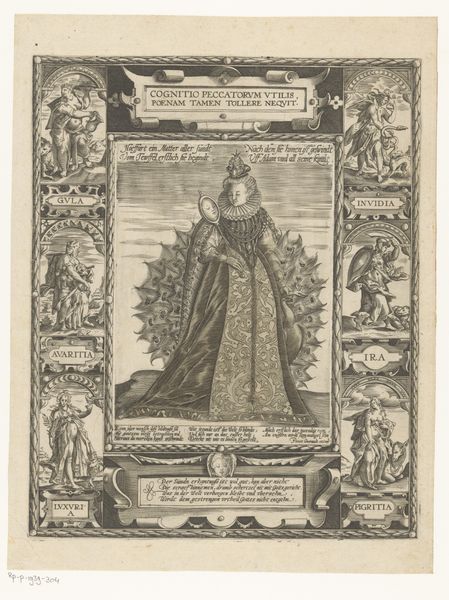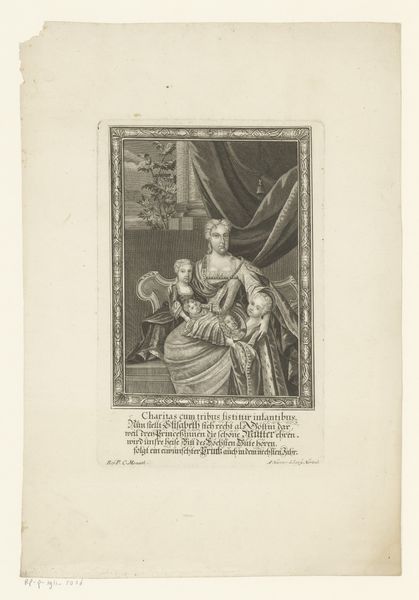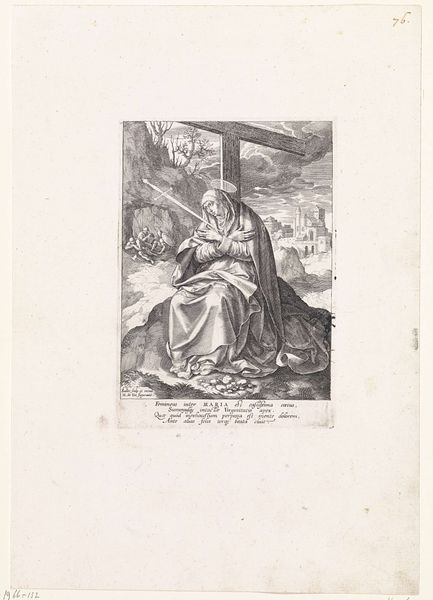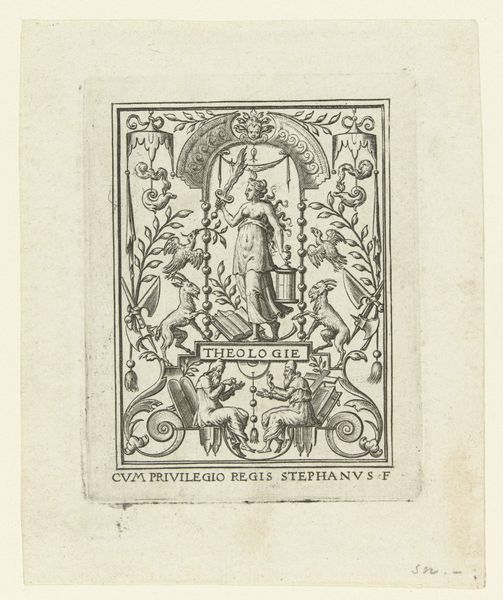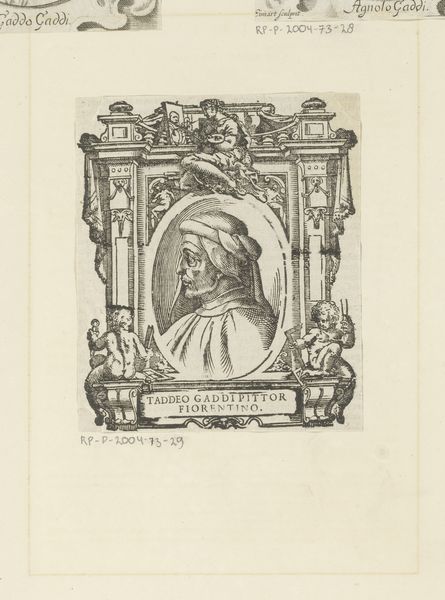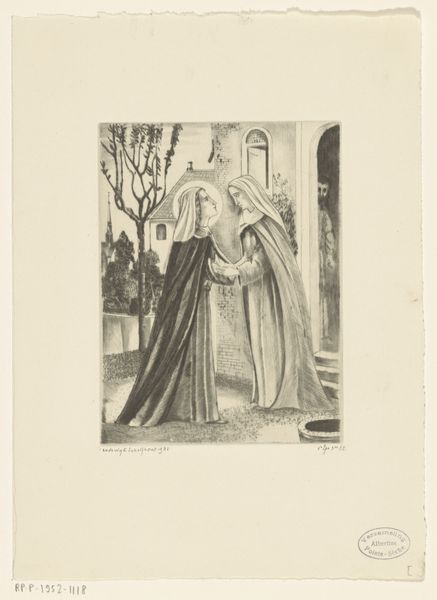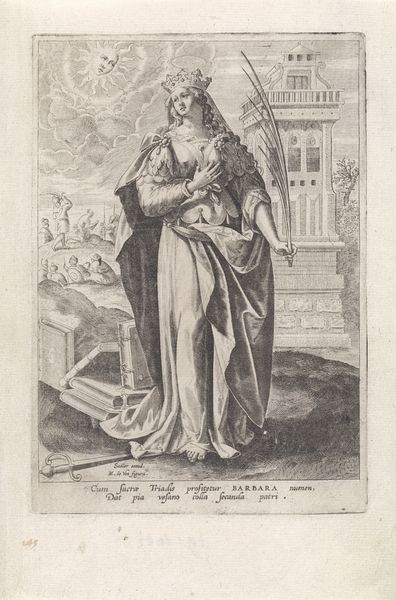
print, engraving
#
allegory
# print
#
mannerism
#
history-painting
#
engraving
Dimensions: height 274 mm, width 196 mm
Copyright: Rijks Museum: Open Domain
This allegory on pride, made by Conrad Goltz, presents a woman adorned with symbols of vanity and superficiality. The peacock feathers she carries, symbols of immortality in antiquity, here transform into emblems of ostentatious display, reflecting a society infatuated with external appearances. Consider the peacock's appearance in earlier Roman mosaics, where it signified Juno, queen of the gods. Over time, its radiant plumage became associated less with divinity and more with earthly arrogance. This evolution mirrors the cyclical nature of symbols, as they are continually re-evaluated, reflecting society’s changing values and anxieties. These shifting symbols tap into our collective memory, where the tension between inner virtue and outward show plays out. Like Narcissus, fixated on his reflection, humanity remains vulnerable to the allure of superficial grandeur. In each age, the temptation to prioritize appearance over essence resurfaces, proving that the dance between pride and humility is an eternal, cyclical play.
Comments
No comments
Be the first to comment and join the conversation on the ultimate creative platform.
